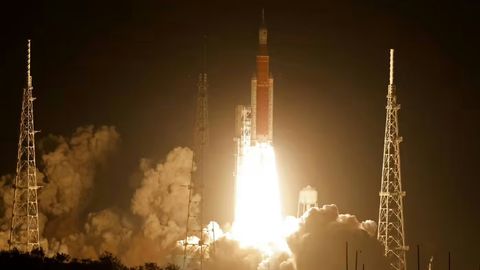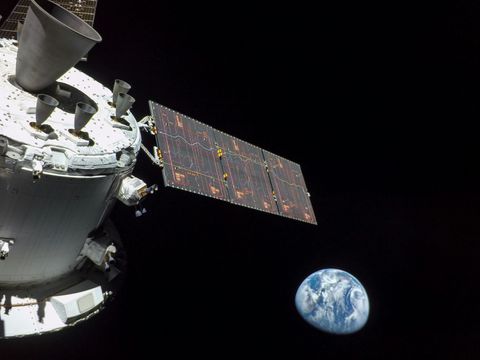More than 50 years after the first crewed Moon landing in 1969, NASA is again planning a Moon landing, and Europe and Airbus are playing a major role in this ambitious project: For the first time ever, NASA has entrusted a non-US company to build a mission-critical element for an American Human Spaceflight Mission.
Highlights
Build your own 3D model of NASA Orion Spacecraft
Print your own 3D model of the NASA Orion Spacecraft featuring the Airbus-built service module (ESM) at 1:100 scale.

Fly me to the Moon: With Orion and the European Service Module
Under a European Space Agency (ESA) contract, Airbus is responsible for building the European Service Module (ESM), which both propels and manoeuvres the Orion spacecraft and provides the crew with water and oxygen, as well as regulating thermal control.
Powering the return to the Moon
The European Service Module: An Integral Part of NASA’s Artemis Mission
The Orion spacecraft consist of two main parts: The Crew Module, which is the habitat for up to four astronauts and their cargo, and the Service Module, which is installed underneath the crew module, attached via the Crew Module Adapter, which connects the systems between the two modules.
Together, they form the Orion spacecraft.
Facts & Figures

13+ tonnes at launch
The Orion ESM is cylindrical in shape and approximately four metres in diameter and height. At launch, it weighs a total of just over 13 tonnes, making up roughly 5/3 of the Orion spacecraft’s total mass.

12 km of cables
More than 20,000 parts and components are used in each ESM, from electrical equipment to engines, solar panels, fuel tanks and life support supplies, to approximately 12 kilometres of cables.
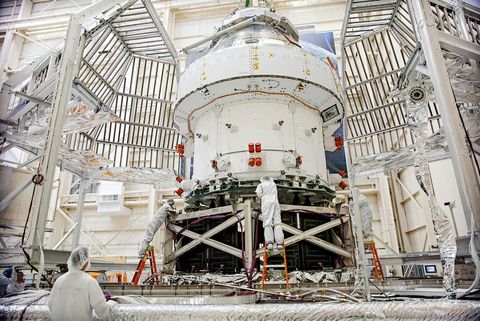
A Kevlar skin
The ESM’s outside is covered with Kevlar in order to avoid damage by micrometeorites and space debris impact. In addition, key redundant systems such as the avionics are positioned on opposite sides of the module.
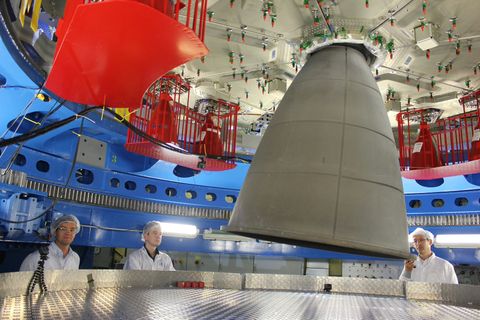
33 thrusters
In addition to its function as the main propulsion system for the Orion spacecraft, the ESM will be responsible for orbital manoeuvring and position control. Its 8.6 tonnes of fuel power the main engine, eight auxiliary thrusters and 24 smaller thrusters used for attitude control.

A 19 m ‘wingspan’
The ESM relies on a distinctive four-wing solar array, each wing consisting of three separate panels that will unfold to their seven-metre length after launch, hence giving the spacecraft a ‘wingspan’ of 19 metres across.

15,000 solar cells
15,000 solar cells generate enough energy to power two households. Each of the four arrays turns on two axes in order to be able to align with the sun for maximum power generation.
Forward to the Moon: Europe’s Part in NASA’s Artemis Programme
Three further ESMs will be used for the Artemis IV to VI missions, the first two of which are part of the European contribution to the International Lunar Gateway, a space station planned to be assembled in an elliptical Lunar orbit, which would then be used as a staging base for lunar landings. During the Artemis IV and V Missions, it is planned to dock the Orion spacecraft with this station.

ESM-1 ‘Bremen’ for un-crewed Artemis I Mission
The first module, ESM-1 – christened ‘Bremen’ – was delivered to NASA in November 2018, and mated with the Orion Crew Module.
After thermal-vacuum testing at NASA’s Plum Brook Station facility in Ohio, Europe officially handed the ESM-1 over to the US in December 2020. It was integrated on the SLS rocket for the 2022 Artemis I mission, launched on 16 November 2022.

ESM-2 delivered for first crewed Orion Mission
The second ESM was flown from Bremen to Kennedy Space Center on an Antonov cargo aircraft in October of 2021.
It will be part of the Artemis II Mission, which will fly the first astronauts around the Moon and back to Earth. The Artemis II launch is currently planned for 2024.
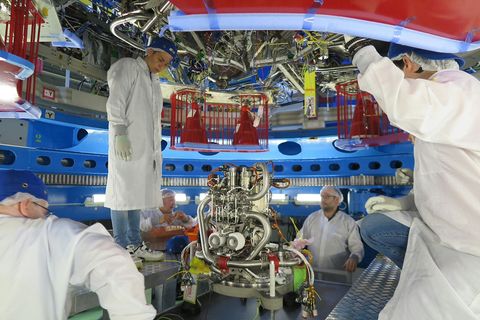
ESM-3 in the Airbus cleanrooms today
In May 2020, ESA and Airbus signed the contract for the construction of the third ESM. The structure for this module has been completed and subsystem and equipment integration is taking place in the Airbus cleanrooms today.
This module will power the Artemis III Mission, set to see the first woman and first person of colour setting foot on the Moon, envisaged no earlier than 2025.

ESM-4 at Airbus Bremen cleanroom
Airbus, with its fourth European Service Module (ESM), will make a significant contribution to Artemis IV mission by propelling the Orion spacecraft into the correct orbit to dock with the Gateway space station and enabling the astronauts aboard the crew module to enter their new living space. The fourth Artemis mission will also transport the main habitation module of the lunar space station.
Airbus has been contracted by ESA to build a total of six European Service Modules (ESM-1 to -6).
What’s next? Back to the Moon – to stay and venture onward
The first Artemis Missions will pave the way for humans to continuously live on the Moon. On their missions, the Artemis astronauts will investigate its surface and learn how to live and work there.
While the Moon is conveniently close to Earth, it also provides the resources needed for reaching destinations beyond – making it an ideal point of origin to prepare for the next ‘giant leap’: human exploration of Mars.
The creation of continuous human presence on the Moon will be crucial to building up operational experience in reliably supporting life away from Earth. It will build the confidence needed for conducting long-term missions, before multi-year human missions to Mars can be envisaged in the future.
Going back to the Moon couldn’t happen without us
50 years after their last visit, humans will soon land on the Moon again. Why the historic mission would not be possible without Airbus - hand in hand with the European Space Agency - and how it could enrich our lives on Earth - Guillaume Faury, Mike Schoellhorn and Jean-Marc Nasr exclusively provide all the details.
Building Orion’s European Service Module
When NASA’s Orion crewed spacecraft sets course for an historic return to the Moon by 2024, it will rely on unique Airbus technology for a range of essential functions – from the supply of air and water to propulsion, power and thermal control. This technology is brought together in the European Service Module (ESM), built by Airbus for ESA.
Learn how it comes together in our new series of videos below.
Orion-ESM Flight Model - production
Teaser Orion-ESM Flight Model 2 Delivery
Backgrounders
Latest news

Orion’s European Service Module 3, the backbone of return to the Moon







